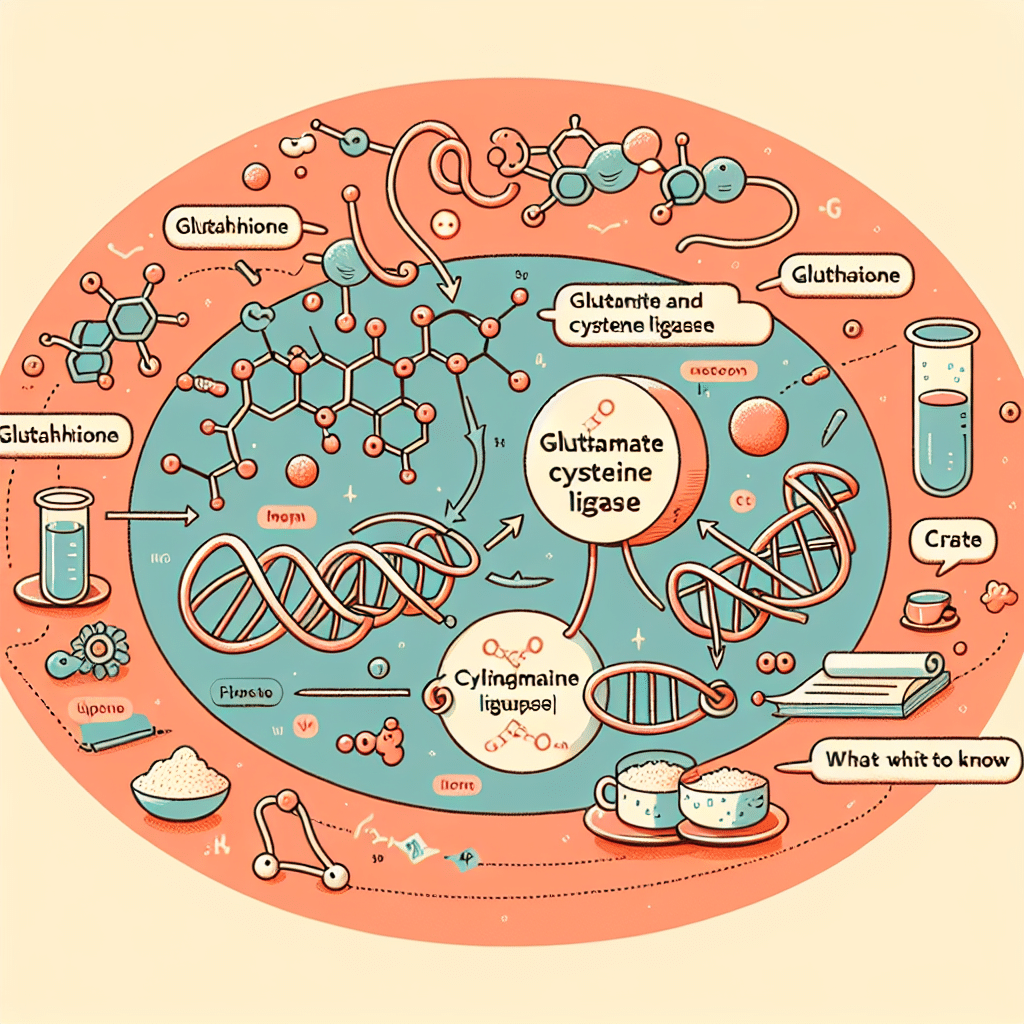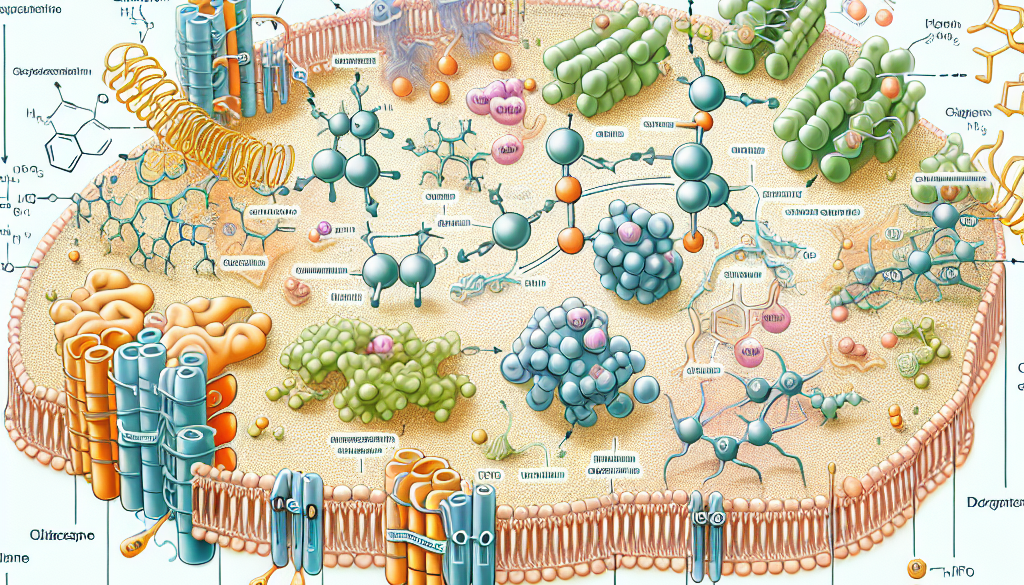Glutathione and Glutamate Cysteine Ligase Cylindrospermopsin: What to Know
-
Table of Contents
- Glutathione and Glutamate Cysteine Ligase: Understanding Their Role in Cylindrospermopsin Detoxification
- Introduction to Glutathione and Glutamate Cysteine Ligase
- The Threat of Cylindrospermopsin
- Glutathione’s Role in Detoxifying Cylindrospermopsin
- Glutamate Cysteine Ligase: The First Defender
- Factors Affecting Glutathione and Glutamate Cysteine Ligase Activity
- Research and Case Studies on Glutathione and Cylindrospermopsin
- Strategies to Boost Glutathione Levels
- Conclusion: The Critical Balance of Glutathione and Glutamate Cysteine Ligase
- Discover ETprotein’s High-Quality Protein Products
Glutathione and Glutamate Cysteine Ligase: Understanding Their Role in Cylindrospermopsin Detoxification

Glutathione (GSH) and glutamate cysteine ligase (GCL) are critical components of the cellular detoxification system. Their roles become particularly significant when dealing with toxic substances such as cylindrospermopsin, a potent cyanotoxin. This article delves into the intricate relationship between GSH, GCL, and cylindrospermopsin, providing insights into their mechanisms and importance in maintaining cellular health.
Introduction to Glutathione and Glutamate Cysteine Ligase
Glutathione is a tripeptide composed of glutamate, cysteine, and glycine. It is a powerful antioxidant found in almost every cell of the body. Glutathione plays a vital role in neutralizing free radicals, detoxifying harmful substances, and maintaining the immune system. Glutamate cysteine ligase, on the other hand, is the rate-limiting enzyme in the synthesis of glutathione. It catalyzes the first step in the glutathione biosynthesis pathway, which is the formation of gamma-glutamylcysteine from glutamate and cysteine.
The Threat of Cylindrospermopsin
Cylindrospermopsin is a cyanobacterial toxin that poses a significant threat to both human health and the environment. It is produced by certain freshwater cyanobacteria and can contaminate drinking water supplies. Exposure to cylindrospermopsin can lead to liver damage, kidney failure, and other serious health issues. Due to its stability and persistence in water bodies, it is crucial to understand how organisms can detoxify this compound.
Glutathione’s Role in Detoxifying Cylindrospermopsin
Glutathione contributes to the detoxification of cylindrospermopsin through conjugation reactions. These reactions, catalyzed by glutathione S-transferases (GSTs), attach glutathione to the toxin, making it more water-soluble and easier for the body to excrete. The importance of GSH in detoxifying cylindrospermopsin cannot be overstated, as it directly influences the ability of an organism to withstand exposure to this toxin.
Glutamate Cysteine Ligase: The First Defender
As the enzyme responsible for initiating glutathione synthesis, glutamate cysteine ligase plays a pivotal role in the body’s defense against cylindrospermopsin. By regulating the availability of glutathione, GCL ensures that cells have a sufficient supply of this crucial antioxidant to combat the effects of the toxin. The activity of GCL can be a limiting factor in how effectively an organism can respond to cylindrospermopsin exposure.
Factors Affecting Glutathione and Glutamate Cysteine Ligase Activity
- Genetic Variability: Genetic differences can influence the levels of GCL and GSTs, affecting an individual’s capacity to detoxify cylindrospermopsin.
- Nutritional Status: Adequate levels of the precursor amino acids, particularly cysteine, are necessary for GSH synthesis.
- Environmental Stressors: Other toxins and stressors can deplete GSH levels, compromising the detoxification process.
- Age and Health: Age-related decline in GSH and GCL activity can impair detoxification pathways.
Research and Case Studies on Glutathione and Cylindrospermopsin
Several studies have investigated the role of glutathione in the detoxification of cylindrospermopsin. For instance, research on animal models has shown that pre-treatment with GSH precursors can mitigate the toxic effects of cylindrospermopsin. Additionally, case studies of waterborne outbreaks have highlighted the importance of maintaining robust GSH levels to protect against cyanotoxin poisoning.
Strategies to Boost Glutathione Levels
Enhancing the body’s glutathione levels can be an effective strategy to counteract the effects of cylindrospermopsin. This can be achieved through dietary supplementation with GSH precursors, such as N-acetylcysteine (NAC), or by consuming foods rich in sulfur-containing amino acids. Regular exercise and avoiding exposure to environmental toxins can also help maintain optimal GSH levels.
Conclusion: The Critical Balance of Glutathione and Glutamate Cysteine Ligase
In conclusion, glutathione and glutamate cysteine ligase are essential components of the cellular defense mechanism against cylindrospermopsin. Understanding their roles and the factors that influence their activity is crucial for developing strategies to mitigate the risks associated with cyanotoxin exposure. By maintaining a healthy lifestyle and ensuring adequate levels of these protective molecules, individuals can enhance their resilience against such environmental threats.
Discover ETprotein’s High-Quality Protein Products
If you’re looking to support your body’s glutathione levels, consider exploring ETprotein’s range of protein products. Their offerings, including organic rice protein, pea protein, and various seed proteins, provide the essential amino acids necessary for GSH synthesis. ETprotein’s commitment to quality ensures that you receive the best products to meet your nutritional needs.
About ETprotein:
ETprotein, a reputable protein and L-(+)-Ergothioneine (EGT) Chinese factory manufacturer and supplier, is renowned for producing, stocking, exporting, and delivering the highest quality organic bulk vegan proteins and L-(+)-Ergothioneine. They include Organic rice protein, clear rice protein, pea protein, clear pea protein, watermelon seed protein, pumpkin seed protein, sunflower seed protein, mung bean protein, peanut protein, and L-(+)-Ergothioneine EGT Pharmaceutical grade, L-(+)-Ergothioneine EGT food grade, L-(+)-Ergothioneine EGT cosmetic grade, L-(+)-Ergothioneine EGT reference grade and L-(+)-Ergothioneine EGT standard. Their offerings, characterized by a neutral taste, non-GMO, allergen-free attributes, with L-(+)-Ergothioneine purity over 98%, 99%, cater to a diverse range of industries. They serve nutraceutical, pharmaceutical, cosmeceutical, veterinary, as well as food and beverage finished product distributors, traders, and manufacturers across Europe, USA, Canada, Australia, Thailand, Japan, Korea, Brazil, and Chile, among others.
ETprotein specialization includes exporting and delivering tailor-made protein powder and finished nutritional supplements. Their extensive product range covers sectors like Food and Beverage, Sports Nutrition, Weight Management, Dietary Supplements, Health and Wellness Products, and Infant Formula, ensuring comprehensive solutions to meet all your protein needs.
As a trusted company by leading global food and beverage brands and Fortune 500 companies, ETprotein reinforces China’s reputation in the global arena. For more information or to sample their products, please contact them and email sales(at)ETprotein.com today.














